Top Rankings
Fergus Falls Area SP. ED. Coop. School District ranks among the top 20% of public school district in Minnesota for:
Category
Attribute
Science Proficiency
Highest science proficiency (Top 20%)
For the 2025 school year, there are 2 public preschools serving 75 students in Fergus Falls Area SP. ED. Coop. School District.
Public Preschools in Fergus Falls Area SP. ED. Coop. School District have a diversity score of 0.31, which is less than the Minnesota public preschool average of 0.63.
Minority enrollment is 17% of the student body (majority Hispanic), which is less than the Minnesota public preschool average of 42% (majority Hispanic and Black).
Overview
This School District
This State (MN)
# Schools
3 Schools
722 Schools
# Students
81 Students
214,815 Students
# Teachers
n/a
16,916 Teachers
Student : Teacher Ratio
n/a
n/a
District Rank
Fergus Falls Area SP. ED. Coop. School District, which is ranked within the top 30% of all 522 school districts in Minnesota (based off of combined math and reading proficiency testing data) for the 2021-2022 school year.
Overall District Rank
#167 out of 527 school districts
(Top 50%)
(Top 50%)
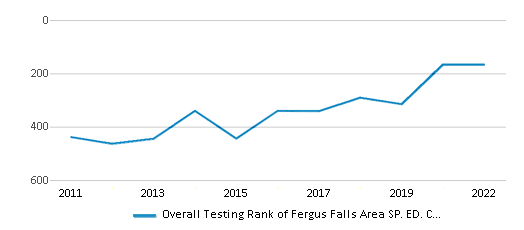
Math Test Scores (% Proficient)
<50%
45%
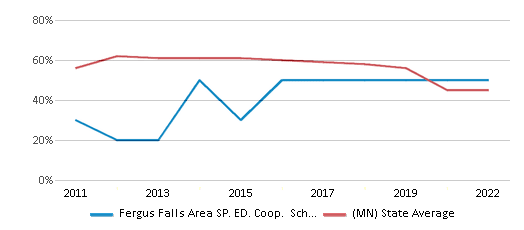
Reading/Language Arts Test Scores (% Proficient)
<50%
51%
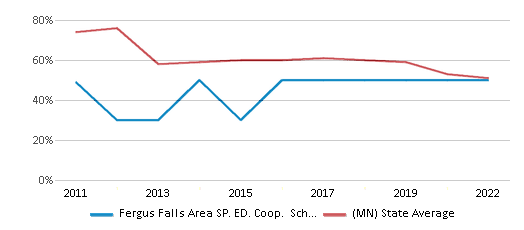
Science Test Scores (% Proficient)
<50%
41%
Students by Ethnicity:
Diversity Score
0.35
0.63
# American Indian Students
2 Students
4,606 Students
% American Indian Students
2%
2%
# Asian Students
n/a
15,449 Students
% Asian Students
n/a
7%
# Hispanic Students
7 Students
28,913 Students
% Hispanic Students
9%
13%
# Black Students
3 Students
27,236 Students
% Black Students
4%
13%
# White Students
65 Students
123,893 Students
% White Students
80%
58%
# Hawaiian Students
n/a
300 Students
% Hawaiian Students
n/a
n/a
# Two or more races Students
4 Students
14,418 Students
% of Two or more races Students
5%
7%
Students by Grade:
# Students in PK Grade:
67
24,443
# Students in K Grade:
-
34,761
# Students in 1st Grade:
-
32,541
# Students in 2nd Grade:
2
32,166
# Students in 3rd Grade:
2
29,034
# Students in 4th Grade:
4
28,343
# Students in 5th Grade:
-
24,163
# Students in 6th Grade:
4
7,122
# Students in 7th Grade:
-
1,002
# Students in 8th Grade:
2
940
# Students in 9th Grade:
-
44
# Students in 10th Grade:
-
46
# Students in 11th Grade:
-
48
# Students in 12th Grade:
-
162
# Ungraded Students:
-
-
District Revenue and Spending
The revenue/student of $47,580 is higher than the state median of $17,854. The school district revenue/student has declined by 19% over four school years.
The school district's spending/student of $46,679 is higher than the state median of $18,580. The school district spending/student has declined by 19% over four school years.
Total Revenue
$4 MM
$15,547 MM
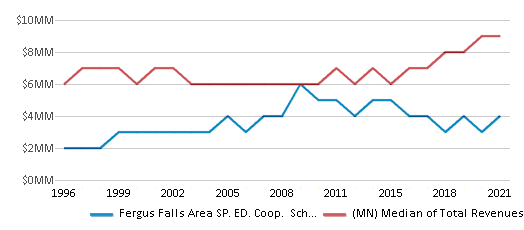
Spending
$4 MM
$16,179 MM

Revenue / Student
$47,580
$17,854
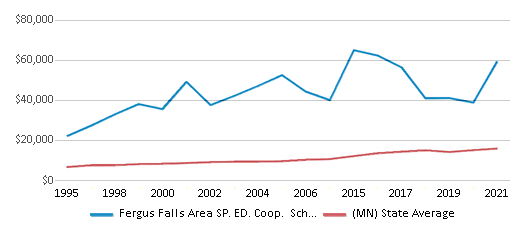
Spending / Student
$46,679
$18,580
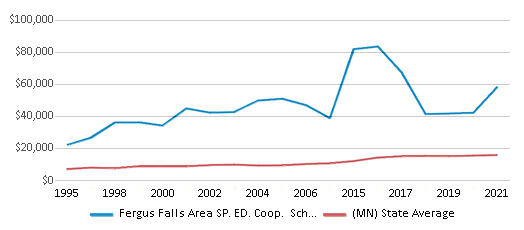
Best Fergus Falls Area SP. ED. Coop. School District Public Preschools (2025)
School
(Math and Reading Proficiency)
(Math and Reading Proficiency)
Location
Grades
Students
Rank: #11.
Fergus Falls Ec/elementary Sp Education
Special Education School
(Math: <50% | Reading: ≥50% )
Rank:
Rank:
7/
Top 50%10
518 Friberg Ave
Fergus Falls, MN 56537
(218) 998-0935
Fergus Falls, MN 56537
(218) 998-0935
Grades: PK-4
| 8 students
Rank: n/an/a
Fergus Falls Early Childhood Sp Education
Special Education School
724 W Laurel St
Fergus Falls, MN 56537
(218) 998-0935
Fergus Falls, MN 56537
(218) 998-0935
Grades: PK
| 67 students
Recent Articles

Year-Round Or Traditional Schedule?
Which is more appropriate for your child? A year-round attendance schedule or traditional schedule? We look at the pros and cons.

Why You Should Encourage Your Child to Join a Sports Team
Participating in team sports has a great many benefits for children, there is no doubt. In this article you will learn what those benefits are.

White Students are Now the Minority in U.S. Public Schools
Increasing birth rates among immigrant families from Asia and Central and South America, combined with lower birth rates among white families, means that for the first time in history, public school students in the United States are majority-minority. This shift in demographics poses difficulties for schools as they work to accommodate children of varying language abilities and socio-economic backgrounds.





